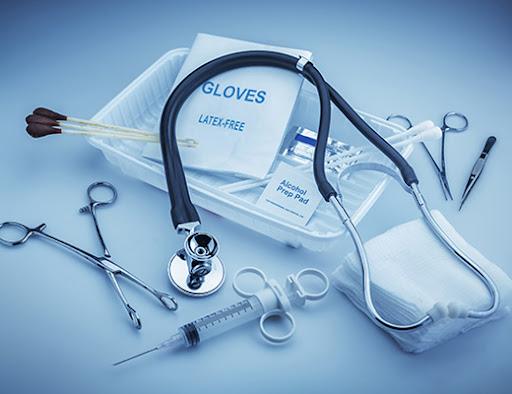Introduction
When you walk into a hospital or clinic, you’re surrounded by tools that save lives daily. But what are medical equipment and supplies, exactly? In simple terms, they’re the instruments, machines, and consumables healthcare professionals use to diagnose, treat, and care for patients. From bandages to MRI scanners, these tools form the backbone of modern medicine. By understanding their scope, you unlock opportunities in a $500+ billion global market—whether you’re a clinician, investor, or entrepreneur. Let’s dive in.
1. Defining Medical Equipment vs. Supplies
Core Differences and Why They Matter
Medical equipment refers to reusable, complex devices (e.g., ventilators, ultrasound machines). Supplies are single-use items (e.g., syringes, gloves). Key distinctions:
-
Durability: Equipment lasts years; supplies are disposable.
-
Regulation: Equipment undergoes strict FDA approvals; supplies follow simpler compliance.
-
Cost: Equipment requires heavy investment; supplies are operational expenses.
💡 Stat: Durable Medical Equipment (DME) alone is a $60 billion market in the U.S. (2023).
2. Types of Medical Equipment
From Diagnostics to Life Support
Diagnostic Equipment
Tools that identify diseases:
-
Imaging Systems: MRI, CT scanners, X-ray machines.
-
Monitoring Devices: ECG machines, pulse oximeters.
-
Lab Analyzers: Blood gas analyzers, hematology systems.
✅ Also check: best finger pulse oximeter
Therapeutic Equipment
Devices that treat conditions:
-
Infusion Pumps: Deliver precise medication doses.
-
LASIK Machines: Correct vision surgically.
-
Dialysis Systems: Filter blood for kidney patients.
Life Support Equipment
Critical for sustaining bodily functions:
-
Ventilators: Aid breathing in ICU patients.
-
Heart-Lung Machines: Used in open-heart surgery.
🌍 Outbound Link: Learn about global standards at the WHO Medical Devices Portal.
3. Types of Medical Supplies
Consumables Powering Daily Care
Disposable Supplies
-
Infection Control: Gloves, masks, sanitizers.
-
Wound Care: Bandages, sutures, dressings.
-
Injection Tools: Syringes, IV catheters.
Durable Medical Equipment (DME)
Reusable aids for patient mobility/function:
-
Mobility Devices: Wheelchairs, walkers.
-
Home Care: Hospital beds, oxygen concentrators.
✅ Also check: portable bladder scanner
4. The Medical Equipment Market: Trends & Opportunities
Booming Growth and Investment Hotspots
| Equipment Category | 2023 Market Size | Projected Growth (2023-2030) |
|---|---|---|
| Diagnostic Imaging | $36.5 billion | 5.8% CAGR |
| Patient Monitoring | $25.3 billion | 7.2% CAGR |
| Surgical Equipment | $18.9 billion | 6.5% CAGR |
| Key Drivers: Aging populations, telehealth expansion, and AI integration. |
5. Regulations and Safety Standards
Navigating FDA, CE, and ISO Compliance
-
FDA Class I-III: Bandages (Class I) vs. pacemakers (Class III).
-
CE Marking: Mandatory for EU market access.
-
Common Pitfalls: 30% of startups fail due to compliance gaps.
🌍 Outbound Link: Explore FDA guidelines here.
6. Debunking 3 Major Misconceptions
Separating Fact from Fiction
-
Myth: “Medical equipment is only for hospitals.”
Truth: Home-use devices (e.g., glucose monitors) dominate 40% of the market. -
Myth: “Supplies are low-profit commodities.”
Truth: Premium consumables (e.g., RFID-tagged surgical tools) yield 50%+ margins. -
Myth: “Entry requires a medical degree.”
Truth: Distributors like Dune Medical Devices Inc. train entrepreneurs.
7. How to Start a Medical Equipment Business
Your 5-Step Roadmap
-
Niche Selection: Focus on high-demand areas like aesthetic devices or home care.
-
Certifications: Obtain ISO 13485 and regional licenses.
-
Supplier Partnerships: Source from FDA-approved manufacturers.
-
Marketing: Target clinics via SEO and LinkedIn.
-
After-Sales Service: Offer maintenance contracts (recurring revenue!).
✅ Also check: aesthetic device ROI
8. Case Study: Profiting in the Aesthetic Niche
Real-World Success Story
A spa owner invested in a Cryoskin 3.0 device (✅ see details):
-
Cost: $25,000 upfront.
-
ROI: 12 clients/day × $150/session = $18,000/month.
-
Payback Period: <2 months.
9. Future Innovations to Watch
AI, Wearables, and Beyond
-
Smart Diagnostics: FDA-approved AI for early cancer detection.
-
Wearable Tech: ECG-enabled smartwatches (e.g., Apple Watch).
-
3D-Printed Implants: Custom joints printed in 24 hours.
10. FAQs
Quick Answers to Top Questions
Q: What’s the difference between DME and disposable supplies?
A: DME (e.g., wheelchairs) is reusable; supplies (e.g., gauze) are single-use.
Q: Can I resell used medical equipment?
A: Yes, after rigorous sanitization and compliance checks.
Q: How do I choose between new vs. refurbished devices?
A: Refurbished suits budget-conscious buyers; new devices offer warranties.
✅ Also check: ultrasound machine
Q: Are at-home medical devices reliable?
A: FDA-cleared options (e.g., pulse oximeters) are clinically validated.
Conclusion: Turn Knowledge into Opportunity
Understanding what medical equipment and supplies are is your first step into a resilient, high-growth industry. Whether you’re:
-
A healthcare provider optimizing patient care,
-
An entrepreneur launching a distribution business, or
-
An investor capitalizing on medtech innovations,
…this field offers unparalleled potential.
🔔 Ready to Explore Top-Tier Equipment?
👉 Visit Dune Medical Devices Inc.’s Shop for FDA-approved devices, from cryotherapy machines to patient monitors. Partner with experts and build your success story today!
➡️ https://dunemedicaldevicesinc.com/
✅ Also check:

